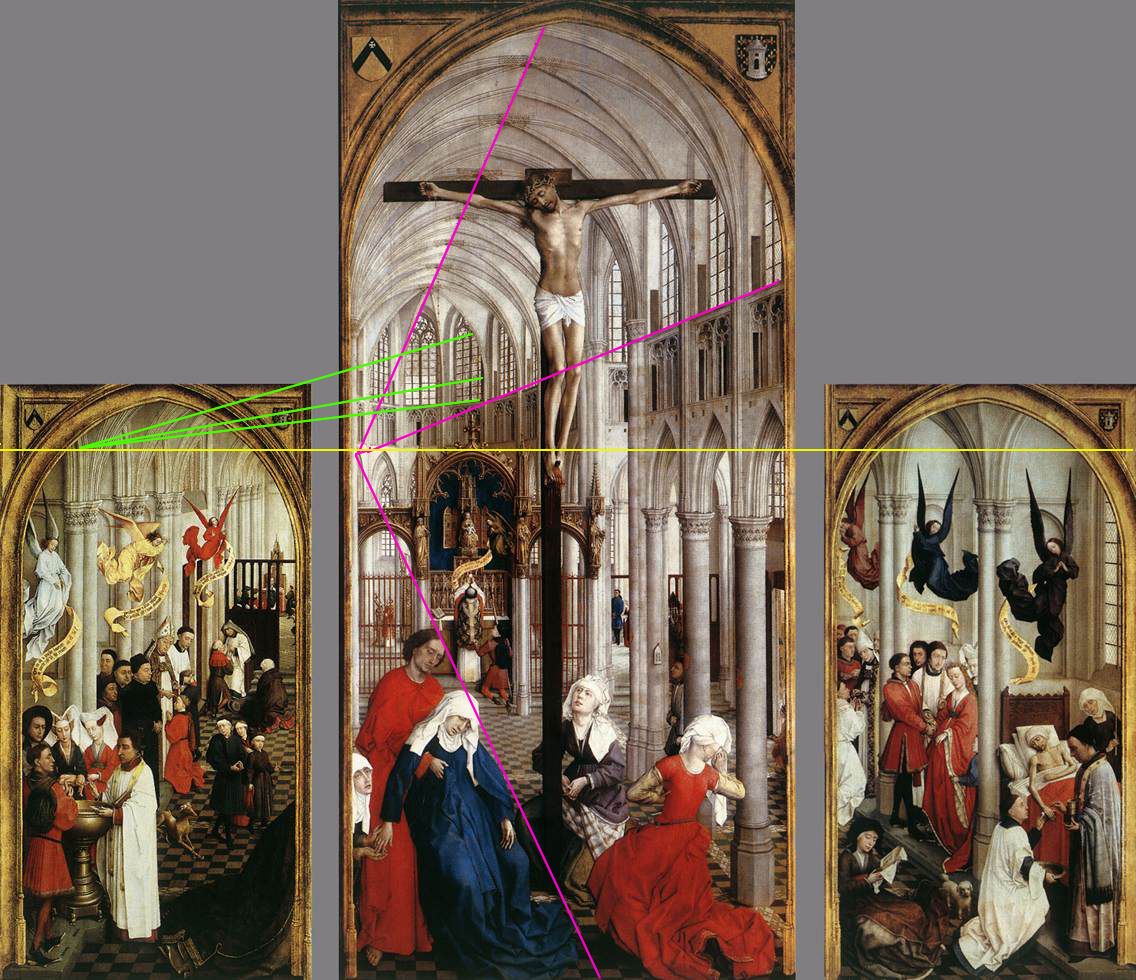
The vanishing point of all the orthogonals is called the primary vanishing point.
Since the primary vanishing point is at the origin, the horizon line corresponds to the x-axis.

This is because if the viewer's line of sight is parallel to the line we're looking at, the it's parallel to the xz-plane. Since the line of sight begins in the xz-plane (the viewer's eye is on the z-axis), it must stay in the xz-plane. Thus it must hit the picture plane on the x-axis somewhere.
(If the lines are parallel to the "side wall" (the yz-plane) then the vanishing point will be on the y-axis, which we'll call the verizon line.)
